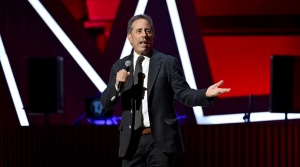Deal or No Deal?
Published November 27, 2013
The emphatic assertions of American and Israeli leaders do not form a coherent basis for assessing the historic agreement struck over the weekend among Iran and six leader nations, including the United States.
In reviewing the transaction, It doesn’t really matter how much President Barack Obama, Secretary of State John Kerry and their fellow P5+1 leaders (permanent United Nations Security Council members plus Germany) attempt to reassure about the deal. Similarly, it doesn’t matter how much Israeli Prime Minister Benjamin Netanyahu, U.S. Congressional leaders or Saudi Arabia condemn it.
Of course it’s distressing whenever Israel and the U.S. don’t agree on major initiatives. But the proper basis for analysis here is the safety and security of Israel and the world.
ADVERTISEMENT
There’s a fair debate about whether the deal provides a better framework for moving toward a nuclear weapon-free Iran than either no deal at this time or some other hypothetical deal or military action that might have been attempted in its place. We think it does, but we acknowledge that on this, reasonable minds can differ (and they have) and depending on the outcomes of the ongoing talks, may continue to do so.
The deal is essentially a prelude to a full-bore negotiation that provides Iran limited relief on a relatively small portion of current economic sanctions in exchange for forbearance on aspects of its nuclear program. The negotiation period to reach a final arrangement is six months, which can be extended up to a year by mutual agreement of the parties.
By rough estimates, the sanction relief appears to be in the $6-$7 billion range. According to the Washington Post, this represents “about six weeks of the oil revenue that Iran is losing to sanctions.” There are also agreements not to impose new nuclear-related sanctions upon Iran.
ADVERTISEMENT
In exchange for this relief, Iran takes several steps related to its nuclear program. Of its existing medium-enriched stocks, it will reduce half to 5 percent enrichment levels and convert the other half to an oxide form more consistent with nuclear fuel for domestic use. It will not enrich any other stocks above 5 percent. It will not advance its operations at specified, unspecified or new nuclear plants.
The intent of the temporary deal is to create a framework in which a more permanent arrangement has a greater chance to occur. Some of the parameters of a final arrangement are articulated in the current agreement, and would effectively remove nuclear-related sanctions in exchange for ongoing assurances that Iran’s nuclear program could only be used for research and civilian power.
There are legitimate bases for both supporting and opposing this deal. The arrangement is one way of moving toward a nuclear weapon-free Iran without a military offensive that might delay but almost certainly would not eliminate a nuclear threat. The deal gives time at the table for more deliberate discussions, while at the same time reducing some of Iran’s more highly-enriched stocks and providing comprehensive verification terms.
Proponents also argue that the amount of sanctions relief is very small and not sufficient to reintroduce Iran economically into world commerce. And they don’t believe that more sanctions, in the absence of a preliminary deal, would necessarily bring Iran to the table. Iran has its own domestic hurdles, and while continued sanctions would certainly further cripple its economy, many believe the hardline factions would advocate for additional, if not accelerated, enrichment activity if the nation is pressed further against the wall.
On the other hand, opponents’ criticisms must not go unheeded. While the agreement relies on verification, not trust, many see the likelihood of Iranian cheating — by continued enrichment above 5 percent or otherwise — as unduly high. They see the set of Iranian centrifuges remain in place.
What’s more, opponents argue that sanctions were working and that even more sanctions would work more. They are concerned that even very limited sanction relief will cause other nations to take the restrictions less seriously and begin engaging in more economic activity with Iran (which is why the U.S. Treasury Department is already utilizing aggressive diplomacy on this front in the aftermath of the agreement). And they’re not buoyed by the notion of an Iran with permanent nuclear capability, if only for domestic power and research; after all, that could once again become a source of enrichment contention down the road.
We don’t dismiss the opposition to the deal, either from Israel or America, out of hand. (Saudi Arabia we’re less concerned with, as they are mostly fearing loss of the “most favored nation” status they’ve enjoyed from the U.S. since the Iranian revolution.) And we support the imposition of more rigorous sanctions in the event the temporary deal does not evolve into a permanent one; we’re not even sure at this point that given the politics of late 2014 with midyear elections we would support a six-month extension of the initial half-year negotiating period.
Nevertheless, we cannot know the alternate future of what would have happened in the absence of this arrangement. And we think that for a very short-term deal, the risks of small sanctions relief and of Iran breaking the deal are offset by bringing existing Iranian nuclear stocks down to lower enrichment levels and enhancing prospects of a negotiated long-term settlement. For those reasons, we support the current agreement and hope for success at the bargaining table.














